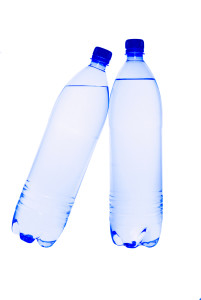 Diuretics are medications that increase your urine production. Most patients with PAH require diuretics at some point in their disease course. This is due to abnormal hormone signals that are produced by your heart, lungs and kidneys that lead to inappropriate fluid retention. In health, your salt and water balance in your body is carefully regulated. If you eat a salty meal or drink too much water, your kidneys will easily remove the excess salt and water in urine. Patients with PAH are not able regulate their salt and fluid balance as well and over time most retain salt and water. You recognize this as swelling in your ankles and in your abdomen. You may notice that your neck veins are also distended.
Diuretics are medications that increase your urine production. Most patients with PAH require diuretics at some point in their disease course. This is due to abnormal hormone signals that are produced by your heart, lungs and kidneys that lead to inappropriate fluid retention. In health, your salt and water balance in your body is carefully regulated. If you eat a salty meal or drink too much water, your kidneys will easily remove the excess salt and water in urine. Patients with PAH are not able regulate their salt and fluid balance as well and over time most retain salt and water. You recognize this as swelling in your ankles and in your abdomen. You may notice that your neck veins are also distended.
Salt & Fluids
Diuretics as prescribed by your doctor allow your body to better handle the salt and fluids that you eat and drink. However, if you take in too much salt and fluids, you can overwhelm even diuretics and still retain fluid. It is essential that you limit your salt and fluid intake. I advise my patients to limit their salt to 2,000mg of sodium (salt) and 64 ounces (2 liters) of liquids.
Types of Diuretics
There are several families of diuretics. The most common family is the Loop Diuretic family and includes furosemide (Lasix), bumetidine (Bumex), and torsamide (Demadex). These diuretics all work on the same part of the kidney. Bumetidine is the most powerful, but all can achieve the same effect. The loop diuretics cause the kidney to lose potassium. Most patients will require either potassium replacement or the addition of a second diuretic (potassium-spairing diuretic) to prevent low potassium levels.
Another type of diuretic is the thiazide family. This family works on a different part of the kidney and is not as strong as the loop diuretic family. When a thiazide-type diuretic is combined with a loop diuretic, the combination can be impressively effective. Great care must be taken to avoid electrolyte imbalances.
The last family of diuretics that I commonly use is the potassium-spairing family. Spironolactone (Aldactone) is the most commonly used agent. I use this type of diuretic to augment the effect of the loop diuretics and limit the amount of potassium that patients have to take. Care should be taken to avoid potassium levels that are too high. I check periodic blood chemistries to make sure that the blood electrolytes are balanced.
Effects of Diuretics on Heart Catheterization
A reader recently asked if diuretic use alters the findings on heart catheterization. This is an excellent question. If you have PAH, taking your diuretics will not make your PAH disappear. However, if you don’t take your diuretics, your numbers at heart catheterization will be much worse. My preference is to have patients as close to their goal weight as possible when I perform a right heart catheterization. In patients that are retaining a large amount of excessive fluid, I prefer to adjust their diuretics prior to doing a heart catheterization and once the fluid status is improved I will then move forward with a right heart catheterization.
